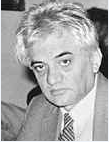Case Report
Case Study: Normo-Tensive Glaucoma in A 49-Year-Old Female
- Ragni Kumari *
- Luxmi Singh
Department of Ophthalmology, Era University, Lucknow, Uttar Pradesh, India.
*Corresponding Author: Ragni Kumari, Case Study: Normo-Tensive Glaucoma in A 49-Year-Old Female
Citation: Kumari R., Singh L. (2025). Case Study: Normo-Tensive Glaucoma in A 49-Year-Old Female, International Clinical and Medical Case Reports, BioRes Scientia Publishers. 4(1):1-3. DOI: 10.59657/2837-5998.brs.25.049
Copyright: © 2025 Ragni Kumari, this is an open-access article distributed under the terms of the Creative Commons Attribution License, which permits unrestricted use, distribution, and reproduction in any medium, provided the original author and source are credited.
Received: February 03, 2025 | Accepted: March 25, 2025 | Published: April 01, 2025
Abstract
Normo-tensive glaucoma (NTG) is a subtype of open-angle glaucoma characterized by optic nerve damage and visual field loss despite normal intraocular pressure (IOP). This case study presents a 49-year-old female diagnosed with NTG, highlighting the challenges in diagnosis, treatment, and follow-up. The patient exhibited characteristic glaucomatous changes in the optic nerve head and visual fields, despite normal IOP measurements, underscoring the importance of a comprehensive evaluation in NTG cases.
Keywords: normo-tensive glaucoma; open-angle glaucoma; intraocular pressure; optic nerve damage; visual field loss; treatment; vascular factors; neuroprotection
Introduction
Normo-tensive glaucoma (NTG) is a form of open-angle glaucoma where optic nerve damage occurs in the presence of normal intraocular pressure (IOP), typically under 22 mmHg. Unlike primary open-angle glaucoma (POAG), where elevated IOP is the primary risk factor, NTG is often associated with vascular or systemic factors, such as reduced ocular blood flow, which may contribute to optic nerve ischemia. Diagnosing NTG can be challenging, as it requires ruling out other potential causes of optic neuropathy while identifying characteristic optic nerve changes and visual field defects. This case study presents a 49-year-old woman with NTG and discusses the diagnostic process, treatment regimen, and follow-up care.
Case Presentation
Patient Profile
Age: 49 years
Gender: Female
Occupation: Office worker
Chief Complaint: Difficulty reading fine print, indicative of presbyopia.
History
Ocular History: Mrs. Barkha had been prescribed near glasses in her early twenties to address presbyopia. Her distance vision was clear, and she used near glasses for comfortable reading.
Medical History: No significant medical conditions reported. She is not on any prescribed medication.
Family History: No family history of glaucoma, cataracts, or other eye conditions, nor of systemic diseases such as hypertension, diabetes, or cardiovascular disorders.
Clinical Examination
Visual Acuity (VA):
Right Eye (RE): Unaided VA 6/7.5, with a prescription of Plano -0.25 x180, BCVA 6/7.5, ADD +1.00
Left Eye (LE): Unaided VA 6/7.5, with a prescription of Plano -0.25 x180, BCVA 6/7.5, ADD +1.00
Pupils: Round, reactive, with brisk response to light.
Slit-lamp Examination
- Cornea clears except for a small old traumatic scar in the inferior right cornea.
- Quiet bulbar conjunctiva with no redness.
- Anterior chamber depth measured at 0.3 using the Van Herrick technique.
- Gonioscopy: Open anterior angles with visible Schwalbe’s line, Schlemm’s canal, and trabecular meshwork.
Ophthalmoscopy
- Maculas were healthy.
- Cup-to-Disc Ratio: 0.8 in the right eye and 0.7 in the left eye, with a depth of 1 dioptre.
- Neural retinal rims exhibited thinning and disruption of the ISNT rule (Inferior > Superior > Nasal > Temporal).
Intraocular Pressure (IOP)
- RE: 12 mmHg
- LE: 14 mmHg
- Measured by non-contact tonometer at 1:00 p.m. (normal range: 10-21 mmHg).
Visual Field
Superior arcuate defects observed in both eyes, close to fixation, with relatively deep scotomas.
Diagnosis
Normo-Tensive Glaucoma (NTG) was diagnosed based on the following criteria:
Optic Nerve Head Changes: Cupping with thinning of the neural retinal rim and disruption of the ISNT rule.
Visual Field Defects: Superior arcuate defects in both eyes, indicative of glaucomatous damage.
Intraocular Pressure (IOP): Measurements consistently within the normal range (12 mmHg in RE and 14 mmHg in LE).
Open Anterior Angles: Gonioscopy revealed open angles with clear trabecular meshwork and Schlemm’s canal.
Exclusion of Secondary Causes: No other ocular or systemic conditions (such as trauma, inflammatory diseases, or secondary glaucomas) could explain the optic nerve damage.
Differential Diagnosis
Other potential causes of optic nerve damage were considered:
Primary Open-Angle Glaucoma (POAG): Excluded due to normal IOP and open anterior angles.
Intermittent Closure Glaucoma: Excluded based on consistent normal IOP and open angles.
Glaucomatocyclitic Crisis: Excluded by absence of ocular inflammation.
Steroid-Induced Glaucoma: No history of steroid use.
Non-Glaucomatous Optic Neuropathies: Conditions such as ischemic optic neuropathy, optic neuritis, or optic nerve compression were ruled out through imaging and clinical evaluation.
Congenital Anomalies: No evidence of congenital optic nerve abnormalities such as colobomas or tilted discs.
The diagnosis of NTG was established as a diagnosis of exclusion.
Management
Initial treatment was initiated with Latanoprost 0.005% (Xalatan) eye drops at night (HS), with the goal of reducing IOP by at least 30% to prevent further optic nerve damage. The patient was advised on the importance of regular follow-up visits for monitoring IOP, visual fields, and optic nerve status.
Follow-up 1 (15 Days Later):
- IOP: RE 10 mmHg, LE 12 mmHg
- Treatment continued with the same regimen.
Follow-up 2 (1 Month Later):
- IOP: RE 10 mmHg, LE 12 mmHg
- As IOP reduction was inadequate, Travoprost 0.004% was added to the treatment regimen at night, replacing Latanoprost to improve efficacy.
Discussion
Normo-tensive glaucoma (NTG) is often difficult to diagnose due to the absence of elevated IOP, which is typically considered the hallmark of glaucoma. However, NTG involves characteristic optic nerve damage and visual field loss, even when IOP remains within normal limits. The pathophysiology of NTG is not completely understood, but it is believed that impaired ocular blood flow or ischemia may contribute to optic nerve damage. Various systemic factors such as systemic hypertension, migraine, diabetes, and vascular disorders have been linked to NTG, suggesting that vascular insufficiency plays a critical role in its development.
Management of NTG focuses on lowering IOP, although neuroprotection may also be an important consideration. Studies have shown that a 30% reduction in IOP is associated with slower progression of optic nerve damage. In NTG, medications such as prostaglandin analogues (e.g., Latanoprost, Travoprost), beta-blockers (e.g., Betaxolol), and carbonic anhydrase inhibitors (e.g., Dorzolamide) are often used. Additionally, neuroprotective agents, including oral calcium channel blockers and Memantine, have been explored, although their efficacy remains under investigation.
Conclusion
Normo-tensive glaucoma remains a challenging diagnosis due to its lack of elevated IOP. Early detection relies on recognizing characteristic optic nerve changes and visual field defects. In this case, Mrs. Barkha’s diagnosis of NTG was confirmed through comprehensive clinical evaluation and careful exclusion of other potential causes of optic neuropathy. The patient’s treatment regimen, which included prostaglandin analogues and follow-up monitoring, aimed to prevent further optic nerve damage. Ongoing research into neuroprotective therapies may provide additional avenues for improving patient outcomes in NTG. Regular follow-up is crucial in managing NTG to monitor IOP, optic nerve health, and visual field progression. As such, NTG represents an important subset of glaucoma requiring careful management to prevent irreversible vision loss.
References
- Anderson, D. R., Drance, S. M., Schulzer, M. (2003). Factors That Predict the Benefit of Lowering Intraocular Pressure in Normal Tension Glaucoma. American Journal of Ophthalmology, 136(5):820-829.
Publisher | Google Scholor - Hoyng, P. F., Kitazawa, Y. (2002). Medical Treatment of Normal Tension Glaucoma. Survey of Ophthalmology, 47:S116-S124
Publisher | Google Scholor - Khurana, A. K. (2017). Khurana’s Textbook of Ophthalmology (5th ed.). New Delhi: Elsevier India.
Publisher | Google Scholor - Fan-Paul, N. I., Li, J., Miller, J. S., Florakis, G. J. (2002). Night Vision Disturbances After Corneal Refractive Surgery. Survey of Ophthalmology, 47(6):533-546
Publisher | Google Scholor - Williams, P. D., Brown, S. B. (2011). Normotensive glaucoma: Pathophysiology and management. Current Opinion in Ophthalmology, 22(2):100-104.
Publisher | Google Scholor - Zhu, M., Zhang, Z., Wang, L. (2015). Clinical features and treatment strategies for normotensive glaucoma: A review. International Journal of Ophthalmology, 8(6):1231-1237.
Publisher | Google Scholor - Chylack, L. T., He, S. (2016). A clinical overview of normotensive glaucoma: Mechanisms and management strategies. Ophthalmology Clinics of North America, 29(3):405-413.
Publisher | Google Scholor - Tsai, J. Y., Mikelberg, F. S. (2004). Neuroprotective strategies for treating glaucoma: Current approaches and future directions. Canadian Journal of Ophthalmology, 39(6):631-636.
Publisher | Google Scholor - Shin, H. S., Lee, C. Y. (2013). Normotensive glaucoma: Association with vascular factors and management strategies. Journal of Glaucoma, 22(7):539-544.
Publisher | Google Scholor













